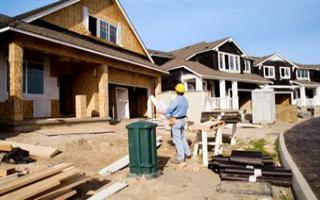
WASHINGTON, DC - It was the first increase in eight months in the sector that was at ground zero in the global economic recession. The housing data in winter months are especially volatile because of the weather. Construction of new housing units had plunged 38% in the previous three months before February's unexpected jump. Economists surveyed by MarketWatch had forecast a further drop to 456,000, despite an expected surge in multifamily construction.
February's annual rate of 583,000 was the highest since November. January's starts were revised higher to a 477,000 pace, a record low dating back to the 1940s.
Building permits, which are less volatile than the starts data, rose 3% in February to a 547,000 annual rate. Permits for single-family units rose 11% to a 373,000 rate, the largest percentage gain in 18 years.
Despite February's gain, housing starts are down 47% from a year ago, and are down 74% from the peak in early 2006. Permits are down 44% in the past year.
The mood of home builders' has rarely been worse. The National Association of Home Builders reported Monday that its sentiment index was stuck at 9 on a scale of 1 to 100 in March.
The government cautions that its monthly housing data are volatile and subject to large sampling and other statistical errors. In most months, the government can't be sure whether starts increased or decreased. In February for instance, the standard error for starts was plus or minus 13.8%. Large revisions are common.
It can take four months for a new trend in housing starts to emerge from the data. In the past four months, housing starts have averaged 568,000 annualized, down from 614,000 in the four months ending in January.
Completions of housing units rose 2.3% to a seasonally adjusted annual rate of 785,000. Completions of single-family homes fell 8.2% to a record low 505,000.
The number of units under construction fell 2.7% to a 762,000 annual rate. Single-family homes under construction dropped 3.4% to 370,000, the lowest in 38 years. Starts rose 89% in the Northeast, rose 58% in the Midwest, rose 30% in the South and fell 25% in the West
Source: MarketWatch